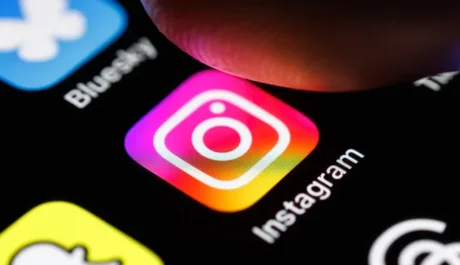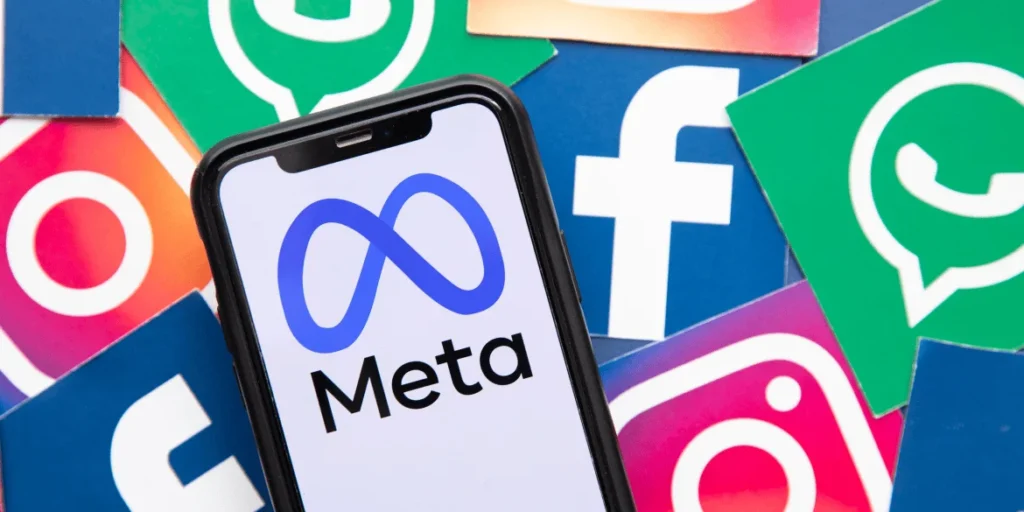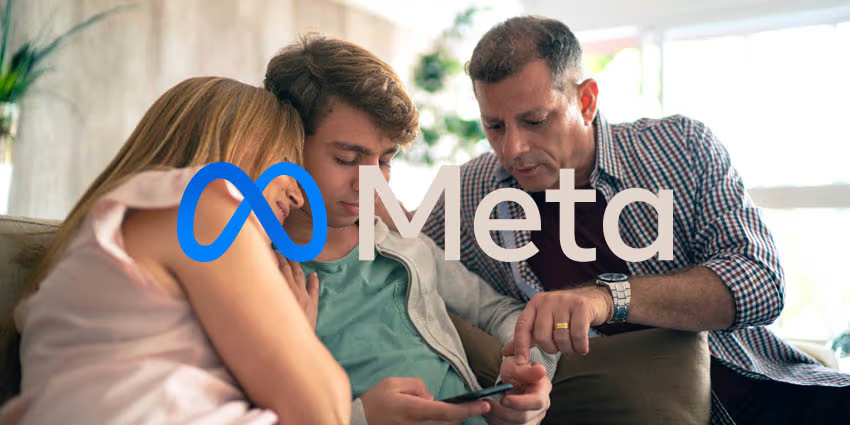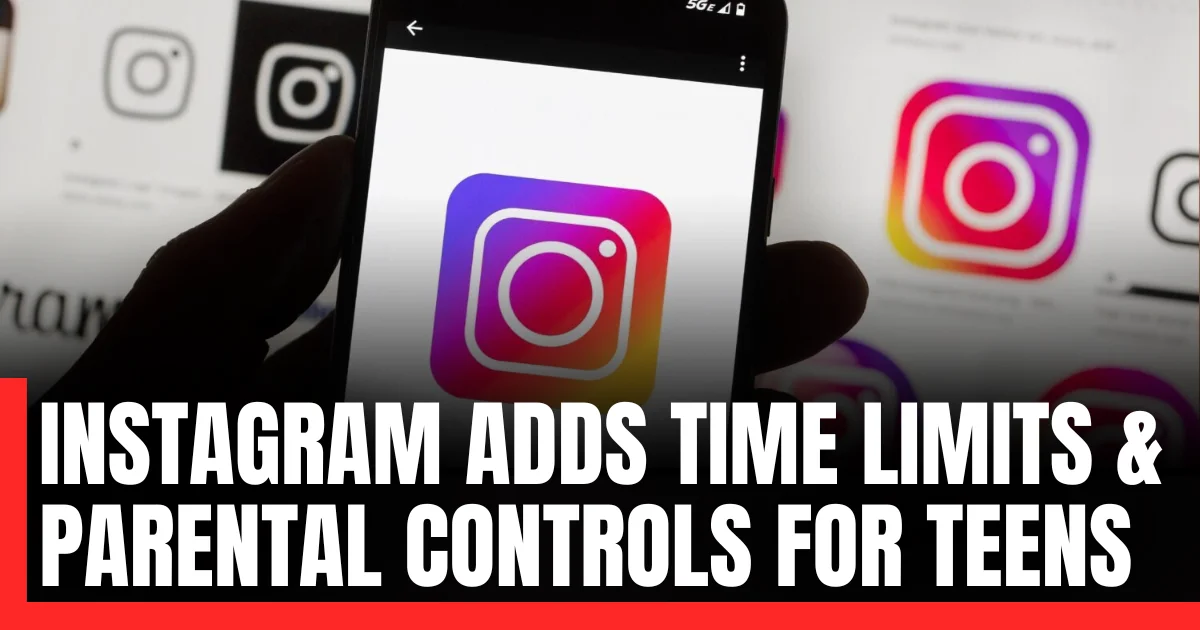Instagram goes PG-13: Meta introduces automatic restrictions for teen accounts including time limits, parental controls & content filtering. What changes January 2026.
Table of Contents
- What’s Changing for Teen Accounts
- Why Meta Is Making This Move Now
- New Parental Controls Explained
- How the Restrictions Actually Work
- Reactions: Parents, Teens & Critics
- FAQ

Breaking: Instagram Implements Automatic Teen Restrictions
Meta announced this morning that Instagram will automatically place all users under 18 into restricted “Teen Accounts” with built-in content limitations, privacy controls, and parental oversight—effectively making the platform PG-13 rated by default starting January 2026.
The Major Changes at a Glance
What Teen Users (Under 18) Will Experience:
🔒 Automatic Private Accounts
- All teen accounts set to private by default
- Must approve each follower
- Cannot be changed to public without parent permission (under 16)
⏰ Built-in Time Limits
- 60-minute daily limit (enforced)
- Sleep mode: 10 PM – 7 AM notifications silenced
- Requires parent code to extend time
🚫 Content Restrictions
- Sensitive content automatically filtered
- No access to posts about:
- Self-harm or suicide
- Eating disorders
- Graphic violence
- Sexual content
- Drug/alcohol promotion
- Cosmetic surgery/weight loss ads blocked
👤 Messaging Restrictions
- Can only receive DMs from mutual followers
- Cannot be messaged by adults they don’t follow
- Cannot be added to group chats by strangers
- AI monitors for suspicious contact patterns
📱 Feature Limitations
- Reels/stories shown for maximum 60 minutes
- “Sensitive” content skipped in feeds
- Ad targeting severely restricted
- Location sharing disabled by default
The Numbers Behind the Decision

Why Meta Is Acting Now
Legal & Political Pressure:
📊 Active Lawsuits Against Meta:
- 42 state attorneys general suing over teen mental health harms
- Hundreds of individual lawsuits from families
- Federal investigations by FTC, DOJ
- Congressional legislation threatening regulation
The Evidence Driving Change:
📉 Internal Meta Research (Leaked 2024):
- 32% of teen girls said Instagram made body image issues worse
- Teens spending average 3.2 hours daily on platform
- 13% of teens traced suicidal thoughts to Instagram content
- Algorithm actively promoted harmful content to teens
External Studies:
- American Psychological Association: Link between social media use and teen depression
- CDC: Teen suicide rates correlated with social media adoption
- UK studies: Instagram ranked worst for teen mental health
The Financial Calculus:
💰 Meta’s Decision:
- Settle lawsuits: Estimated $5+ billion in potential liability
- Avoid regulation: Congress threatening forced changes
- Preempt competition: Beat TikTok to safety features
- Protect brand: Teen safety crisis damaging Meta reputation
Cost vs. Benefit:
- Lost teen engagement: ~$2 billion annually (estimated)
- Avoided legal costs: $5-10 billion (potential)
- Preserved autonomy: Priceless (versus government regulation)
New Parental Controls: What Parents Can Do

Supervision Tools for Parents
Setting Up Parental Controls:
For Teens Under 16:
- Required: Parental supervision automatically requested
- If parent doesn’t respond: Strictest settings enforced
- Cannot be disabled by teen
For Teens 16-17:
- Optional: Parents can request supervision
- Teens can decline but face restrictions
- Requires ongoing parent-teen agreement
What Parents Can Monitor & Control
✅ Time Management:
- Set daily time limits (15 min to unlimited)
- Schedule breaks
- View total time spent
- Set “offline hours”
✅ Content Oversight:
- See who teen follows/followers
- View posts teen is tagged in
- Access DM contact list (not content)
- Review reported content
✅ Permission Requirements:
- Approve setting changes
- Authorize public account switch
- Approve time limit extensions
- Manage sensitive content filters
✅ Activity Alerts:
- Notification when teen reports someone
- Alert if teen blocks someone
- Notice of account changes
- Weekly activity summary
What Parents CANNOT See:
❌ Actual message content (privacy protected)
❌ Search history
❌ Posts teen views (only what they post/like)
❌ Private conversations
How Teens Can Evade Controls (And Meta’s Response)

Known Workarounds:
⚠️ Age Manipulation:
- Teens can claim to be 18+
- Currently verified only by self-reported birthdate
Meta’s Solution:
- AI age estimation from photos
- Third-party ID verification (coming 2026)
- Cross-platform age verification
- Machine learning to detect teen behavior patterns
Effectiveness: Meta admits catching 70% of lying teens, working to improve.
Technical Implementation Details
How Instagram Identifies Teen Accounts
Current Method:
- Birthdate provided at signup
- AI analyzes:
- Content posted (prom photos, school references)
- Interaction patterns (following schools, teen creators)
- Engagement behavior (teen-typical browsing)
- Flags suspected teens with adult accounts
Coming in 2026:
- Photo-based age estimation (facial analysis)
- Yoti age verification (third-party service)
- Government ID upload option
- Social graph analysis (friend age clustering)
Content Filtering Technology
How “Sensitive Content” Is Identified:
🤖 AI Systems:
- Image recognition for harmful visuals
- Natural language processing for captions/comments
- Pattern detection for pro-eating disorder content
- Context analysis for self-harm references
Categories Filtered:
- Violence/gore
- Sexual content
- Self-harm/suicide
- Eating disorders
- Drug use glorification
- Dangerous challenges
- Bullying/harassment
Accuracy:
- Meta claims 94% accuracy on obvious violations
- Human reviewers handle edge cases
- Teens can appeal false blocks
The Technical Challenge
Scale of Implementation:
- 500 million teen Instagram users globally
- 80 million teens in U.S. alone
- Must transition by January 23, 2026
- Requires massive infrastructure changes
Rollout Plan:
- November 2025: New accounts start with restrictions
- December 2025: Existing accounts notified
- January 2026: All teen accounts automatically switched
- February 2026: Parent supervision enforced
Reactions: Support, Skepticism & Pushback
Parent & Advocacy Groups
Supporters:
💬 Common Sense Media:
“This is a significant step forward. While not perfect, these protections address many concerns parents have raised for years. Automatic restrictions are crucial—parents shouldn’t have to opt-in to safety.”
💬 American Academy of Pediatrics:
“We applaud Meta for implementing screen time limits and sleep mode. These align with our recommendations. We’ll be watching implementation closely.”
Skeptics:
💬 Fairplay (Children’s advocacy):
“Meta is doing the bare minimum to avoid regulation. The real issue is the addictive algorithm, which this doesn’t fundamentally change. Lipstick on a pig.”
💬 Parent Coalition for Internet Safety:
“Parents need access to actual message content. Predators use DMs. This gives false sense of security while kids are still vulnerable.”
Teen Reactions (Social Media)
Trending on Twitter/X:
📱 #InstagramRuined – 340K tweets
- Teens angry about time limits
- Workarounds being shared
- “Just use TikTok instead”
- Complaints about parental monitoring
Teen Perspectives:
💬 @maya_chen_16 (TikTok, 2.3M views):
“So Instagram thinks I’m a baby who can’t handle 90 minutes of scrolling? This is literally digital parenting. I’m 17, not 7.”
💬 @teenadvocacy (Instagram post):
“Privacy matters for teens too. We deserve safe spaces to express ourselves without parents watching everything. This feels invasive.”
Counter-perspective:
💬 @youngmentalhealth (Teen mental health advocate):
“Honestly? I’m glad. I was spending 4+ hours on IG daily. The forced limits are annoying but… maybe I needed them. My grades already improving.”
Mental Health Experts
Mixed Reviews:
💬 Dr. Jean Twenge, Psychologist & Author:
“Time limits are proven effective. 60 minutes is reasonable. But the real toxicity is comparison culture and algorithmically-promoted harmful content. Filtering helps but doesn’t solve the core problem.”
💬 Dr. Mitch Prinstein, APA Chief Science Officer:
“The research shows moderate social media use (under 2 hours) has minimal negative effects. These limits are evidence-based. The challenge is enforcement and preventing migration to less-regulated platforms.”
Tech Industry & Competitors
TikTok Response:
💬 TikTok Statement:
“TikTok has had screen time tools and parental controls for years. We welcome Meta finally prioritizing teen safety, though our features remain more comprehensive.”
Translation: “We’re already safer, and we’ll get Instagram’s disgruntled teen users.”
YouTube (Google):
- Announced similar restrictions coming Q1 2026
- Avoiding being left behind on safety
- Competitive pressure mounting
Snap (Snapchat):
- Already has Family Center parental tools
- Positioning as “safety-first” platform
- May gain users from Instagram exodus
Legal & Regulatory Response
State Attorneys General (Leading Lawsuit):
💬 New York AG Letitia James:
“This is a positive step but doesn’t absolve Meta of past harms. Our lawsuit continues. We need to hold them accountable for the damage already done and ensure these changes are permanent and enforceable.”
Congressional Reaction:
💬 Sen. Richard Blumenthal (D-CT):
“Better late than never, but this proves what we’ve been saying: these companies CAN make their platforms safer, they just chose not to until forced. We still need legislation to set minimum standards across all platforms.”
The Competition Impact
Where Will Teens Go?
Platform Shifts Expected:
📊 Analyst Predictions:
- 10-15% of teens abandon Instagram entirely
- TikTok main beneficiary (less restrictive currently)
- BeReal, Snapchat may gain active users
- New platforms could emerge for “unrestricted” teen space
Meta’s Bet:
- Lose some engagement but gain trust
- Parents steer kids to “safer” Instagram
- Competitors forced to match restrictions
- Long-term brand protection worth short-term loss
Revenue Impact
💰 Financial Analysts Estimate:
- Teen advertising worth $3-5 billion annually to Meta
- Restrictions reduce ad targeting effectiveness
- Time limits decrease ad impressions
- Projected revenue loss: $1.5-2 billion/year
But:
- Avoiding $5-10 billion in lawsuit settlements
- Preventing forced government breakup
- Maintaining advertiser relationships
- Worth the trade-off financially
What Happens Next
Implementation Timeline
📅 November 15, 2025:
- Feature rollout begins
- New accounts automatically restricted
- Parent notification emails sent
📅 December 1, 2025:
- Existing teen accounts receive in-app notifications
- 60-day transition period begins
- Parent supervision requests sent
📅 January 23, 2026:
- All teen accounts automatically switched
- Restrictions fully enforced
- Appeals process opens
📅 February 2026:
- Parent supervision requirement enforced (under 16)
- Age verification technology launches
- First compliance reports published
Open Questions
❓ Enforcement:
- Can Meta actually catch teens lying about age?
- Will VPNs allow location workarounds?
- What about teens using parent accounts?
❓ Effectiveness:
- Do time limits reduce harm or just shift to other platforms?
- Can content filters catch evolving harmful content?
- Will teens find technical workarounds?
❓ Privacy:
- Where is age verification data stored?
- How is facial analysis data protected?
- Can governments access parental monitoring data?
❓ Legal:
- Is this enough to satisfy lawsuits?
- Will Congress still regulate?
- Can other countries force different standards?
Frequently Asked Questions
Can teens turn off these restrictions?
Teens 16-17 can request less restrictive settings with parent approval. Teens under 16 cannot disable restrictions—only parents can adjust them.
What if a teen lies about their age?
Instagram uses AI to detect teens pretending to be adults. In 2026, photo-based age estimation and optional ID verification will catch most age liars. Accounts flagged will be restricted until age is verified.
Can parents read their teen’s messages?
No. Parents can see WHO their teen messages but not the content. This balances safety with teen privacy. However, parents receive alerts if teen reports or blocks someone.
What about teens who need Instagram for business/creative work?
Exceptions possible for verified teen creators, athletes, or those with legitimate professional accounts. Must apply with documentation. Still face some restrictions but can get time limit extensions.
Will this apply to Facebook too?
Yes. Similar restrictions rolling out to Facebook, though fewer teens use it. Also applying to Meta’s other platforms.
What if my teen is 18 but still in high school?
18 = legal adult. Restrictions automatically lift. Parents lose access to supervision tools. No exceptions based on school enrollment.
Can teens delete their accounts to avoid restrictions?
Yes, but creating a new account will have the same restrictions based on age. Meta tracks devices and can identify ban evasion attempts.
Conclusion
Meta’s transformation of Instagram into a PG-13 platform represents the biggest change to social media teen safety in the industry’s history. Whether driven by genuine safety concerns or legal/regulatory pressure, the practical impact is real: millions of teens will face significant restrictions on how they use Instagram starting January 2026.
What’s Clear:
- ✅ Restrictions are substantial and automatic
- ✅ Parental controls are more robust than ever
- ✅ Content filtering addresses documented harms
- ✅ Time limits enforce healthy usage patterns
- ✅ Implementation is comprehensive
What’s Uncertain:
- ❓ Whether teens will find workarounds
- ❓ If this meaningfully reduces mental health harms
- ❓ Whether competitors will follow suit
- ❓ If government regulation is still coming
- ❓ Long-term impact on teen social media use
For parents, this is an opportunity to have conversations about healthy social media use. For teens, it’s an adjustment that may feel restrictive but addresses real concerns. For Meta, it’s a high-stakes bet that proactive safety measures will protect the company’s future.
The Instagram teens know is about to change forever. Whether that’s protective parenting or digital overreach depends on who you ask.

